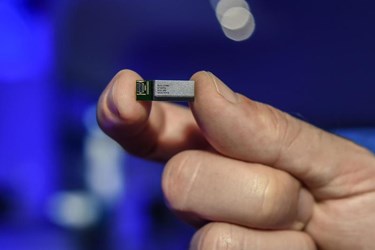In February, u-blox intends to sample a GNSS timer that meets the timing synchronization requirements in 5G mobile networks.

Although previous generation of cellular networks have already been using GNSS time as primary source of synchronization, better synchronization throughout the network will be a key enabler for 5G.
The 5G cellular network will require tighter coordination to offer much greater bandwidth and a broader range of services to the user than 4G, supporting sophisticated features such as beam-forming, carrier aggregation, and massive MIMO.
The timing module’s multi-band capability allows it to compensate the ionosphere error from all GNSS satellite constellations and reduce the timing error under clear skies to less than five nanoseconds without the need for an external GNSS correction service.
The ZED-F9T will give network operators the capabilities to achieve unmatched immunity against spoofing and jamming attacks by combining concurrent reception of multi-band signals from America’s GPS, Europe’s Galileo, Russia’s GLONASS, and China’s Beidou satellites.
Access to all four satellite constellations strengthens the receiver’s global coverage and increases timing availability in challenging signal environments, ultimately delivering more reliable performance.
ZED-F9T also includes advanced security features such as secure boot, secure interfaces, and Time-Receiver Autonomous Integrity Monitoring (T-RAIM).
Support for all four GNSS constellations enables developers to design single products to serve global markets, simplifying OEMs’ product lines.
The module has a single RF input for all the GNSS bands, which simplifies antenna selection. An on-board diplexer, followed by dual SAW filters, provides signal selectivity and out-of-band attenuation.
It is offered in a 54-pin land grid array package of just 17.0 x 22.0 x 2.4mm.
Source from:electronicsweekly

 Englisch
Englisch  Chinesisch
Chinesisch  Deutsch
Deutsch  Koreanisch
Koreanisch  Japanisch
Japanisch  Farsi
Farsi  Portuguese
Portuguese  Russian
Russian  Spanisch
Spanisch 





